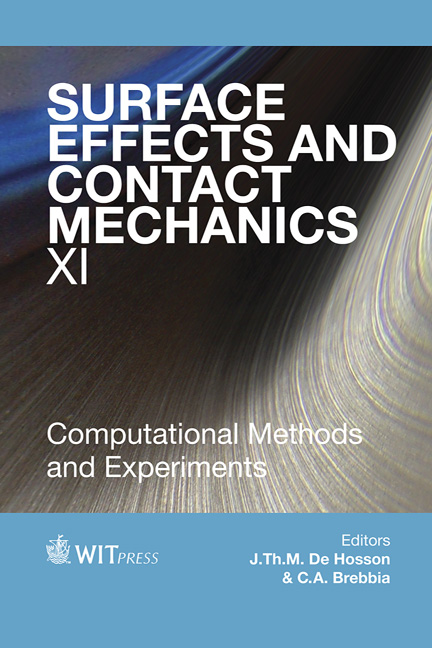Fatigue Behavior Of Ti-15Mo-5Zr-3Al β-type Titanium Alloy With Surface Hardened Layer Induced By Annealing In Nitrogen Gas
Price
Free (open access)
Transaction
Volume
78
Pages
7
Page Range
261 - 267
Published
2013
Size
1,299 kb
Paper DOI
10.2495/SECM130221
Copyright
WIT Press
Author(s)
K. Tamada, Y. Uematsu, T. Kakiuchi, M. Akita, M. Nakajima & Y. Nakamura
Abstract
The bulk β-type titanium alloy, Ti-15Mo-5Zr-3Al, was annealed in nitrogen gas at 1473K (1200ºC) for 0.5 and 1 hour in order to enhance the hardness near the specimen surface. Vickers hardness near the surface reached about 480HV, whilst that of the matrix was 311HV. The increase of hardness was due to the solid solution of nitrogen, precipitation of needle-like α-phases and precipitation of nitrides, TiN. Tensile and four-point bending fatigue tests were conducted, and the nitrogen-gas-annealed specimens had lower tensile and fatigue strengths than the untreated ones. In the annealed specimens, brittle fracture along grain boundaries took place under both static and fatigue loading conditions. EDX analysis revealed that hard and thin TiN layers precipitated along the grain boundaries and their brittle fracture had detrimental effect on the static and fatigue strengths. Subsequently, re-solution treatment at 1123K (850ºC) was applied to the nitrogen-gas-annealed specimens in order to dissolve TiN along grain boundaries into matrix. However, tensile and fatigue strengths did not recovered to those of untreated ones because TiNs were not dissolved by the resolution treatment. Keywords: atigue, β-type titanium alloy, nnealing in nitrogen gas, fatigue crack initiation.
Keywords
Keywords: atigue, β-type titanium alloy, nnealing in nitrogen gas, fatigue crack initiation.





